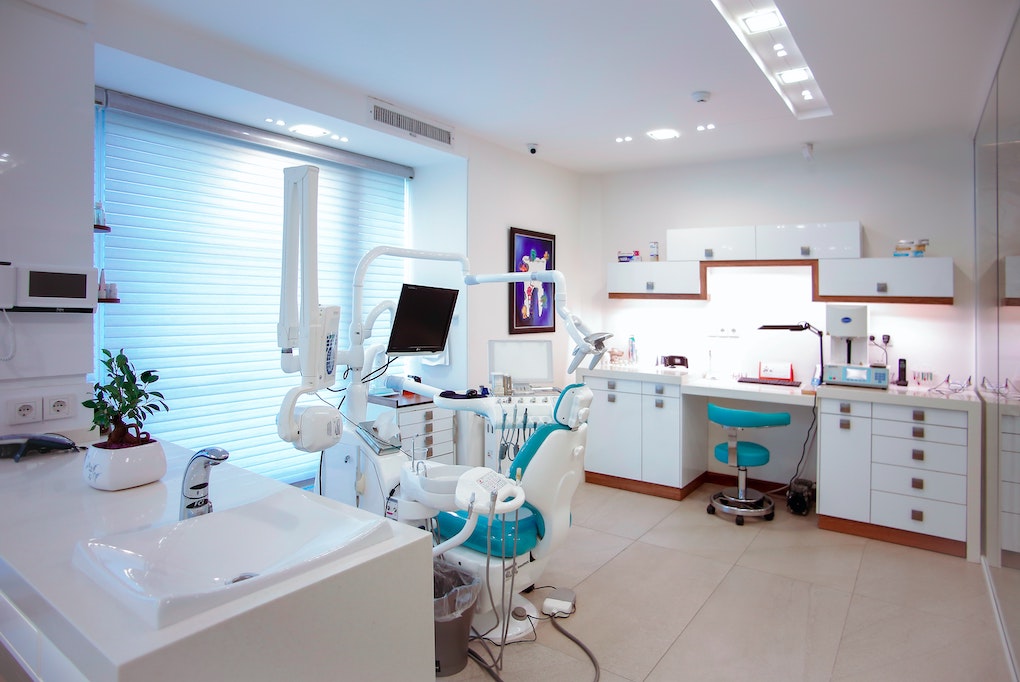
July 10, 2024
More Reasons To Sell Your Dental Practice to a DSO

Now more than ever, dental entrepreneurs are learning that dental service organizations (DSOs) have wrongfully received a bad reputation. Thanks to the industry-wide consolidation trend, the industry has gone from a buyer’s market to a seller’s market, further ensuring that DSOs are mutually beneficial for all parties. But in just five years, DSOs may no longer offer investment options like equity rolls and other lucrative opportunities currently available.
This shift underscores why dentists should seize the advantages of joining a DSO now. With over 375 DSOs to choose from, the time is ripe to explore the many benefits they offer. In this blog, we share even more reasons why selling your dental practice to a DSO is the best strategic move for your future.
Equity Arbitrage
Equity arbitrage is a financial concept that was rarely utilized by dentists before private equity started investing in the space. In short, it all has to do with how valuable the equity is in your practice currently and how much your equity ends up being worth after the sale of your dental practice.
With DSOs, dentists receive a much higher financial result compared to selling to a private party, and the dentist can be a beneficiary of that arbitrage with less risk to the provider. This happens because dental practices have a steady cash flow and returning clientele, making them appealing to private equity investors since they can be very profitable. The best way to know the true value of your dental practice is to have it appraised to learn its enterprise value, which calculates earnings before interest, taxes, depreciation, and amortization (EBITDA), along with how many multiples that groups will consider offering.
The window for equity arbitrage is closing as the industry moves towards consolidation. Dentists, particularly younger entrepreneurs, are increasingly selling to DSOs to seize these opportunities before they diminish. Act now to avoid missing out on maximizing your practice’s value and potential recapitalization events in the next five years.
Higher Valuations
It’s no secret fewer dental practices are selling to individuals than ever before, and there’s good reason why. With an increase in DSOs comes more competition available to dentists looking to sell. And since DSOs typically do not have to rely on bank financing because they are funded by private equity groups, they can pay more for practices than the standard individual thanks to private equity money, economies of scale, and cost structure optimization.
In individual sales, banks often assess practice values based on collections and seller’s discretionary earnings (SDE), which can restrict the maximum price individual buyers are willing to pay. In contrast, DSOs base their valuations on EBITDA, which considers the practice’s profitability and growth potential. This approach aligns more closely with the long-term financial strategies of DSOs supported by private equity.
In the end, not only will you receive a higher valuation for your dental practice, but you’ll also get a higher price point than if you were to sell to a single practitioner.
Partnership Options
When co-owners of a dental practice choose to part ways, there’s a lot that can be done ahead of time to make the transition easier for all those involved. This often happens when one dentist is looking to retire and the other wants to stay on to practice. Even in a partnership, everyone has different paths they want to explore, and joining a DSO helps to navigate the situation and ensure a smooth transition.
Flexible Options
Before deciding to partner with a DSO, it’s important to explore other options that exist beyond selling 100% of the practice to a traditional DSO:
- In the joint venture model, the dentist and DSO both invest capital in the form of money, equipment and other assets into the joint venture, sharing proportionally in the growth of the practice, while the dentist retains day-to-day clinical control of the practice. Additionally, participating dentists typically have the opportunity to share in the practice’s profits, aligning their financial incentives with the success of the venture.
- When transitioning as a sub-DSO, the practice owner will exit the transaction debt-free with a large upfront payment and typically hold 40% ownership and profit share in the sub-DSO portfolio. Returns are made on various levels, including equity, profit sharing, and exit upon a parent DSO recapitalization.
- With a traditional equity roll, the practice owner will sell 100% of their practice. They will then transfer their equity into the DSO as a whole to continue growing their investment. However, there are additional options available that don’t require selling the entire practice. For instance, in a joint venture (JV) model with an equity roll, you can choose to roll a portion of your equity or investment into the DSO. This allows dentists to maintain partial ownership of their practice while benefiting from the resources and support of the DSO.
- In a roll-up, multiple dental practices are combined under one entity in a group to maximize the economies of scale. A well-laid roll-up plan will then receive a higher valuation when the practice is purchased. This is especially relevant with inflation top of mind.
- With a 100% affiliation model, the practice owner sells their entire practice to a DSO, transferring full ownership and operational control to the DSO. This approach allows the dentist to exit completely from practice ownership after a transition period while benefiting from a lump-sum payment and, if preferred, maintaining involvement in patient care.
- In a direct investment scenario, the investor (typically a private equity firm) purchases a stake in the dental practice, which means they become a shareholder or partner. This type of arrangement typically occurs with very large practices or groups of practices that already have robust infrastructure in place. The amount of ownership in the operating company varies per deal; this direct investment can be a buy-out with controlling interest transferring to the investor, or it can be a minority growth investment. The dentist, as the owner of the dental practice or group, continues to manage the clinical and operational aspects of the practice. The investor provides financial resources and strategic support to enhance the practice’s growth and operational efficiency while respecting the dentist’s expertise and role as the primary clinician and business leader.
Defined Exit Strategy
For many dental practitioners, the thought of retiring or transitioning out of practice can bring a significant amount of anxiety. They have concerns about legacy and the future of their practice as they enter the final stages of their careers.
If your exit plan involves selling your practice to another practitioner and then gradually phasing out, it’s important to be aware of potential pitfalls. Once ownership is transferred, you may lose agency in decision-making, which could harm your practice’s reputation and legacy. We’ve seen cases where new owners make sweeping changes that alienate staff and undermine the reputation the previous doctor worked hard to build.
Alternatively, forming a deal with a DSO such as a joint venture can be more beneficial. In such arrangements, the outgoing doctor remains involved in key decisions, maintaining stability within the practice. This model ensures that the practice continues to reflect the standards and values established over many years.
By partnering with a DSO, instead of waiting until retirement is imminent, dentists can develop an exit strategy well in advance. This proactive approach ensures a smoother transition and helps mitigate potential transition issues.
Better Health Care
It’s no secret the connection between oral health and overall health has become stronger over recent years. But the connection between DSOs and better medical and dental integration may not be as obvious. The reality is that DSOs are better equipped to handle “whole person” treatment and have the ability to partner with other medical professionals to play a part in treatment and prevention. These days, DSOs are leading the charge, which is why transitioning to one of the DSO models might be the right move for your dental practice.
Release Managerial Responsibilities
DSOs fit the dentist who craves a work-life balance and don’t want the added stress of the managerial responsibilities that come along with owning a business. Working 32 clinical hours (instead of six days a week with early mornings) is appealing to both the younger and older generation, especially leading up to retirement and to avoid burnout. For those looking to ease into retirement, working for a DSO can offer an abbreviated schedule rather than the added stress of a transition to another dentist. What’s more, you have the chance to expand and move toward a one-stop-shop model, all while increasing the value of your dental practice.
Retain Clinical Autonomy
Gone are the days of having to hit quotas and report how many procedures have been performed. These days, dental entrepreneurs are looking for a true business partner rather than just someone to buy their practice. Modern DSOs are much more hands-off compared to their past reputation. With over 375 DSOs currently operating, sellers can find one that aligns with their clinical and cultural philosophies. This alignment ensures a smoother transition for both patients and staff, allowing dentists to maintain full clinical autonomy while benefiting from DSO support in operational and administrative areas.
Capitalize on the Consolidation Wave
The dental industry is currently halfway through its consolidation wave, only expected to continue for the next 5-7 years, driven by the significant advantages that DSOs offer both financially and operationally. This trend is transforming the landscape, making it an ideal time for dental practitioners to act now. By selling your practice to a DSO, you not only benefit from a higher valuation and reduced managerial responsibilities but also position your practice to thrive under a model that promotes better healthcare integration and operational efficiency.
As this wave continues, the competition among DSOs for quality practices will increase, but it won’t last forever. This means acting now can maximize your financial return and ensure a smooth transition for your practice. Embracing this trend can safeguard your legacy and provide a stable, profitable future for your practice.
Bottom Line
It’s easy to get wrapped up in the conundrum that still exists in the world of DSOs if you try to take the sale of your dental practice into your own hands.
Contact the experts at Professional Transition Strategies to ensure your dental practice transition goes smoothly while preserving the legacy you’ve worked so hard to build.






